In the context of many fluctuations in the world, Vietnam's economy in the first quarter recorded positive signs, in which the service sector and processing and manufacturing industry continued to be the main driving force.
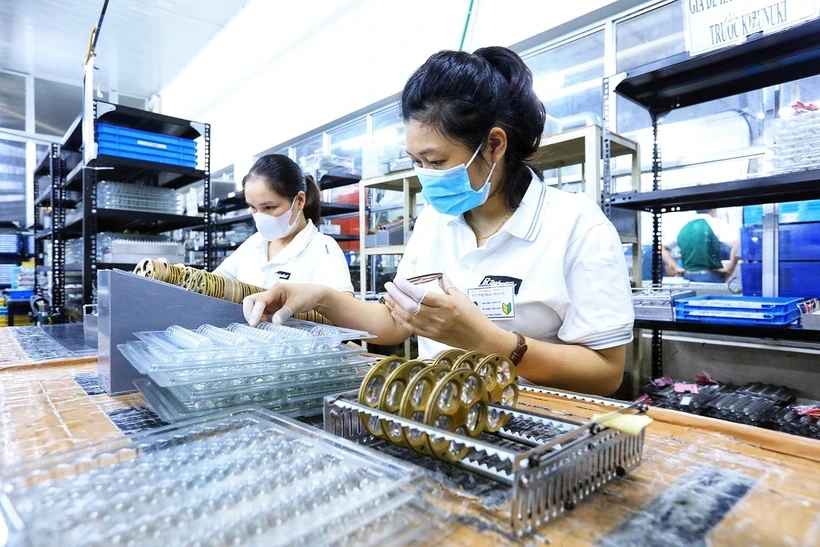
The global economic picture is still “gray” with geopolitical instability and potential risks, but the Vietnamese economy has had an impressive start to 2025. According to data just released by the General Statistics Office, the gross domestic product (GDP) in the first quarter is estimated to increase by 6.93% over the same period last year.
Outstanding growth momentum
Ms. Nguyen Thi Huong, Director of the General Statistics Office, shared that this is an encouraging figure and the highest growth rate in the first quarter over the 5-year period (from 2020-2025). This demonstrates the strong resilience and resilience of the economy. This result has officially surpassed the growth target set for the first quarter in Resolution No. 01/NQ-CP of the Government.
Data shows that the GDP growth rate in the first quarter compared to the same period in the years from 2020 to 2024 is: 3.21%; 4.85%; 5.42%; 3.46% and 5.98%, respectively. The surge of nearly 7% in the first quarter of this year shows that the economy is on the path to recovery and steady acceleration after difficult periods.
"The GDP growth results in the first quarter are a very positive signal, demonstrating the correctness and effectiveness in the direction and administration of the Government and the Prime Minister, along with the efforts of ministries, branches, localities and the business community," said Ms. Nguyen Thi Huong.
Notably, this growth rate has exceeded the target scenario set out in Resolution No. 01/NQ-CP dated January 8, 2025 of the Government (the first quarter target is 6.2-6.6%). However, this figure has not yet reached the higher target of 7.7% for the first quarter stated in Resolution No. 25/NQ-CP dated February 5, 2025. Explaining this, the report of the General Statistics Office pointed out that the rapid, complex and unpredictable fluctuations of the world situation have significantly impacted domestic socio-economic activities.
Services are the growth engine
Analyzing further the growth structure, the representative of the General Statistics Office said that the service sector continued to affirm its leading role when growing by 7.7% compared to the same period last year, contributing the largest proportion to the total added value of the entire economy (53.74%). According to Ms. Huong, the excitement of trade and tourism activities during and after the Lunar New Year holiday along with the increase in the number of international visitors to Vietnam are the main factors promoting the service sector.
In addition, the transportation and warehousing industry increased sharply by 9.9%, contributing 0.67 percentage points; the wholesale and retail industry increased by 7.47%, contributing 0.83 percentage points; accommodation and catering services increased by 9.31%, contributing 0.27 percentage points; finance, banking and insurance activities increased by 6.83%, contributing 0.41 percentage points. The information and communications industry increased by 6.66%, contributing 0.45 percentage points.
Notably, the industrial and construction sector also recorded a positive growth rate of 7.42%, contributing 40.17% to the overall growth rate. In particular, the processing and manufacturing industry continued to be the core driving force with an impressive growth rate of 9.28% (higher than the 7.49% growth rate of the same period in 2024), contributing 2.33 percentage points to GDP growth. The electricity production and distribution sectors (up 4.60%, contributing 0.18 percentage points), water supply and waste treatment (up 8.81%, contributing 0.05 percentage points) also had positive growth. The construction sector maintained a good growth rate of 7.99% (higher than the 7.57% rate of the first quarter of 2024), contributing 0.48 percentage points. This reflects efforts to boost public investment and the recovery of the real estate market in some segments. Only the mining sector recorded a negative 5.76% and reduced overall growth by 0.17 percentage points.
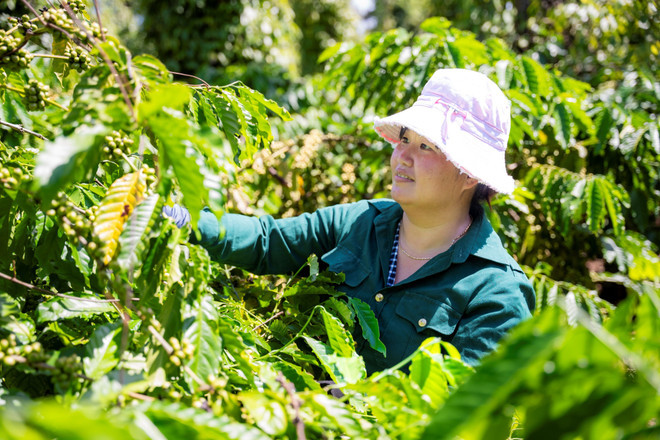
Besides, the agriculture, forestry and fishery sector maintained its role as the economic pillar, growing by 3.74% and contributing 6.09% to the total value added increase.
According to Ms. Huong, this result achieved the set target, mainly thanks to the stable harvest of crops, the output of exploited timber and especially the increase in aquaculture. Specifically, the application of science and technology and high technology in production has helped improve the productivity and quality of agricultural products, better meeting the requirements of the domestic and export markets.
Regarding the economic structure in the first quarter, the service sector continued to increase its proportion, accounting for 43.44%, the industrial and construction sector accounted for 36.31%. Along with that, the agricultural, forestry and fishery sector accounted for 11.56% and product taxes minus product subsidies accounted for 8.69% (down from 8.85%). This shift shows the trend of in-depth development, increasing the value of the service and processing industries.
In terms of GDP use, final consumption in the first quarter increased by 7.45% over the same period, showing a good recovery in domestic purchasing power. Specifically, asset accumulation (reflecting investment activities) increased by 7.24%. In addition, international trade activities also recorded excitement with exports of goods and services increasing by 9.71%, while imports of goods and services increased by 12.45%, showing an increase in demand for raw materials for domestic production and consumption.
Overcoming global challenges
Ms. Nguyen Thi Huong assessed that the impressive growth results of the first quarter were achieved in the context of the world economy facing numerous difficulties and uncertainties. The complicated and unpredictable geopolitical situation, especially the trade policies of major economies (such as the US and the reactions from other countries) have created significant pressure on investment flows and global consumer spending. Moreover, tariff tensions and the risk of trade wars still exist, negatively impacting the supply chain and overall growth.
In addition, non-traditional challenges (such as natural disasters and climate change with increasingly serious consequences) and risks to energy security, food security, and cyber security are increasing. In the context of slowing growth and inflation trending down in the first months of the year, many countries have shifted to loosening monetary policy to stimulate and support economic recovery.
In that context, many international organizations have been more cautious in their global growth forecasts for 2025. The World Bank (WB) and the United Nations in January 2025 maintained their growth forecasts at 2.7% and 2.8%, respectively. However, by March 2025, the Organization for Economic Cooperation and Development (OECD) and Fitch Ratings had revised their forecasts down to 3.1% and 2.3% (down 0.2 and 0.3 percentage points, respectively, from their previous forecasts). The International Monetary Fund (IMF) had a slightly more optimistic view, raising its global growth forecast to 3.3% (up 0.1 percentage points).
In Southeast Asia, forecasts also show a divergence. The World Bank forecasts Vietnam to grow by 6.8% in 2025, while the IMF forecasts similar growth for the Philippines (6.1%) and Indonesia (5.1%), while the United Nations predicts Vietnam could reach 6.5%. Overall, organizations assess Vietnam as one of the bright spots in growth in the region, although the level of optimism varies.
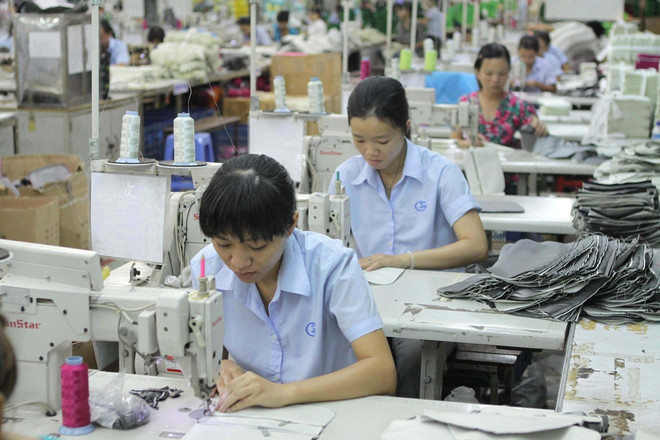
To achieve positive results in the first quarter, the leader of the General Statistics Office said that the Government and the Prime Minister of Vietnam have shown great determination and strongly directed ministries, branches and localities to focus on synchronously implementing solutions. The focus is on effectively implementing Resolution No. 01/NQ-CP on tasks and solutions for socio-economic development in 2025, Resolution No. 02/NQ-CP on improving the business environment and enhancing competitiveness, Directive No. 03/CT-TTg on tasks after Tet and especially Resolution No. 25/NQ-CP with the goal of striving for annual growth of 8% or more.
"The Government's close, flexible and practical direction, along with ministries, branches and localities closely monitoring developments, proactively proposing and implementing appropriate solutions, are key factors helping the first quarter economy achieve positive results," Ms. Huong emphasized./.
Source




![[Photo] General Secretary To Lam presents the title "Hero of Labor" to the Party Committee, Government and People of Ho Chi Minh City](https://vphoto.vietnam.vn/thumb/1200x675/vietnam/resource/IMAGE/2025/4/30/08a5b9005f644bf993ceafe46583c092)

![[Photo] Flag-raising ceremony to celebrate the 50th anniversary of the Liberation of the South and National Reunification Day](https://vphoto.vietnam.vn/thumb/1200x675/vietnam/resource/IMAGE/2025/4/30/175646f225ff40b7ad24aa6c1517e378)


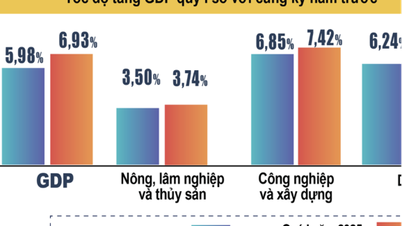


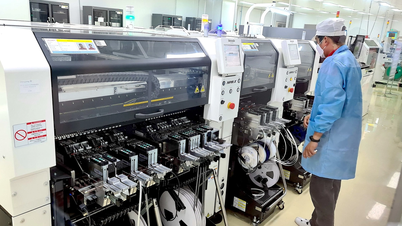


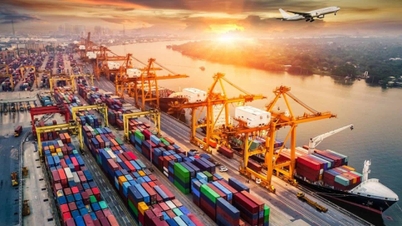

















![[Photo] Demonstration aircraft and helicopters flying the Party flag and the national flag took off from Bien Hoa airport](https://vphoto.vietnam.vn/thumb/1200x675/vietnam/resource/IMAGE/2025/4/30/b3b28c18f9a7424f9e2b87b0ad581d05)


































































Comment (0)